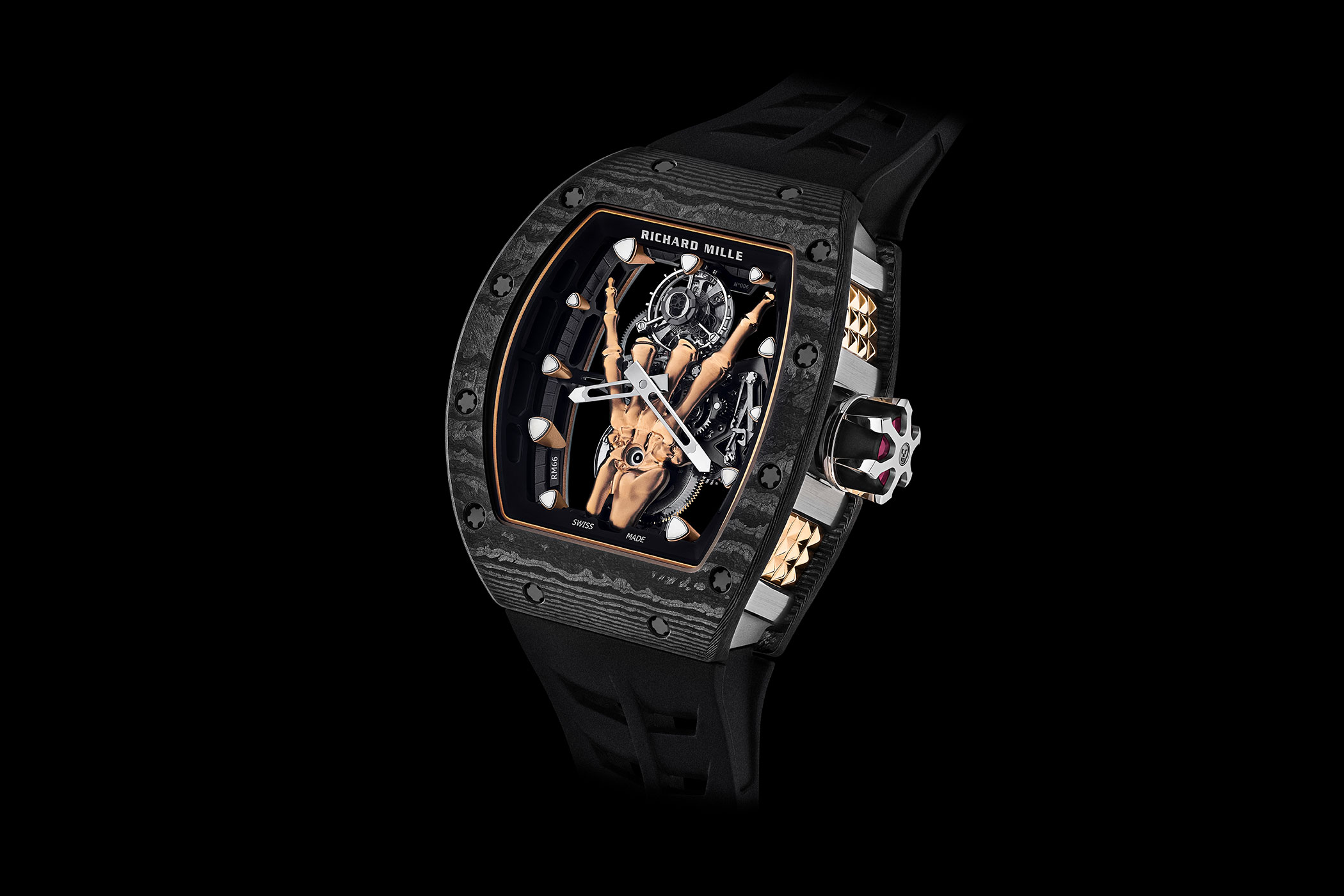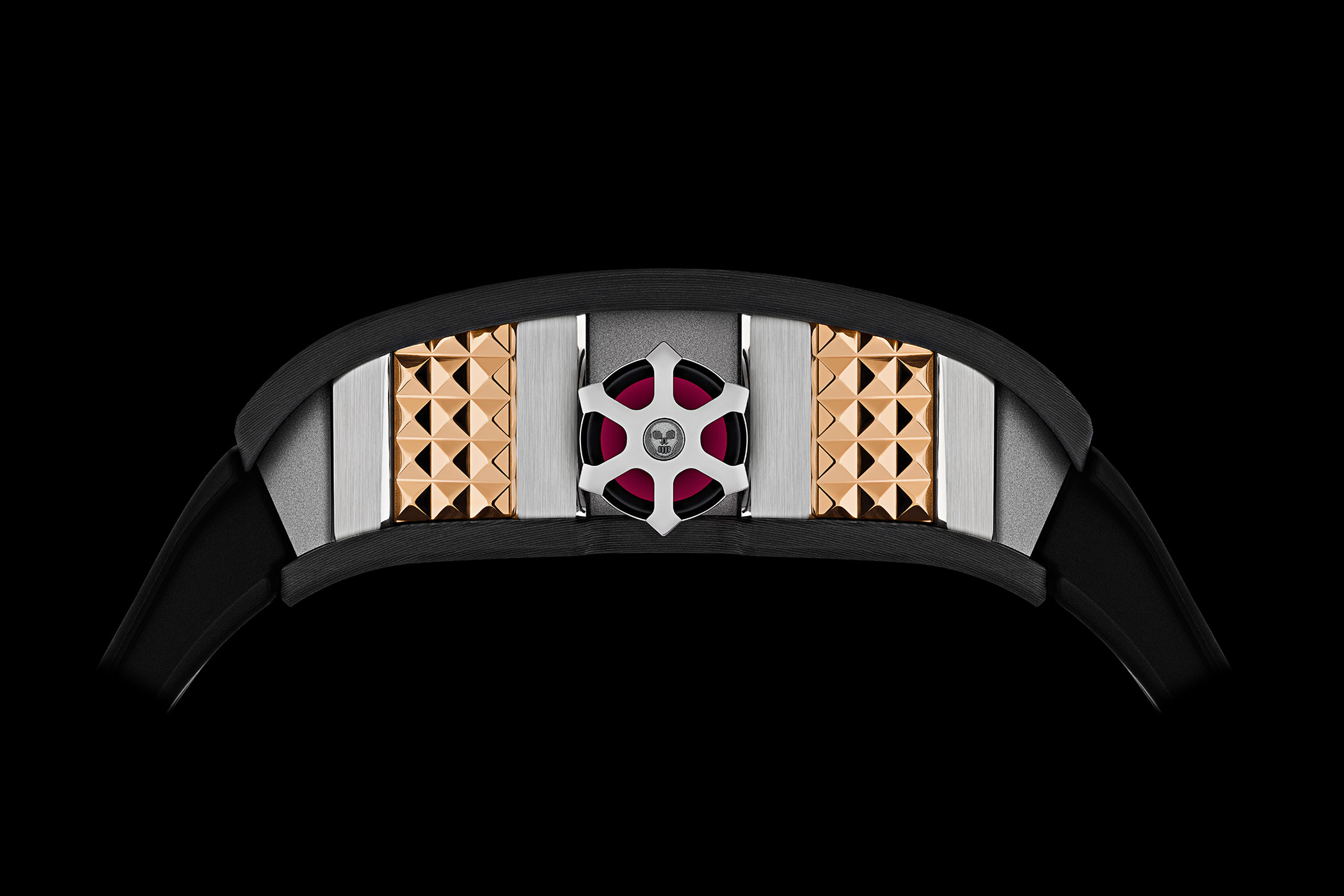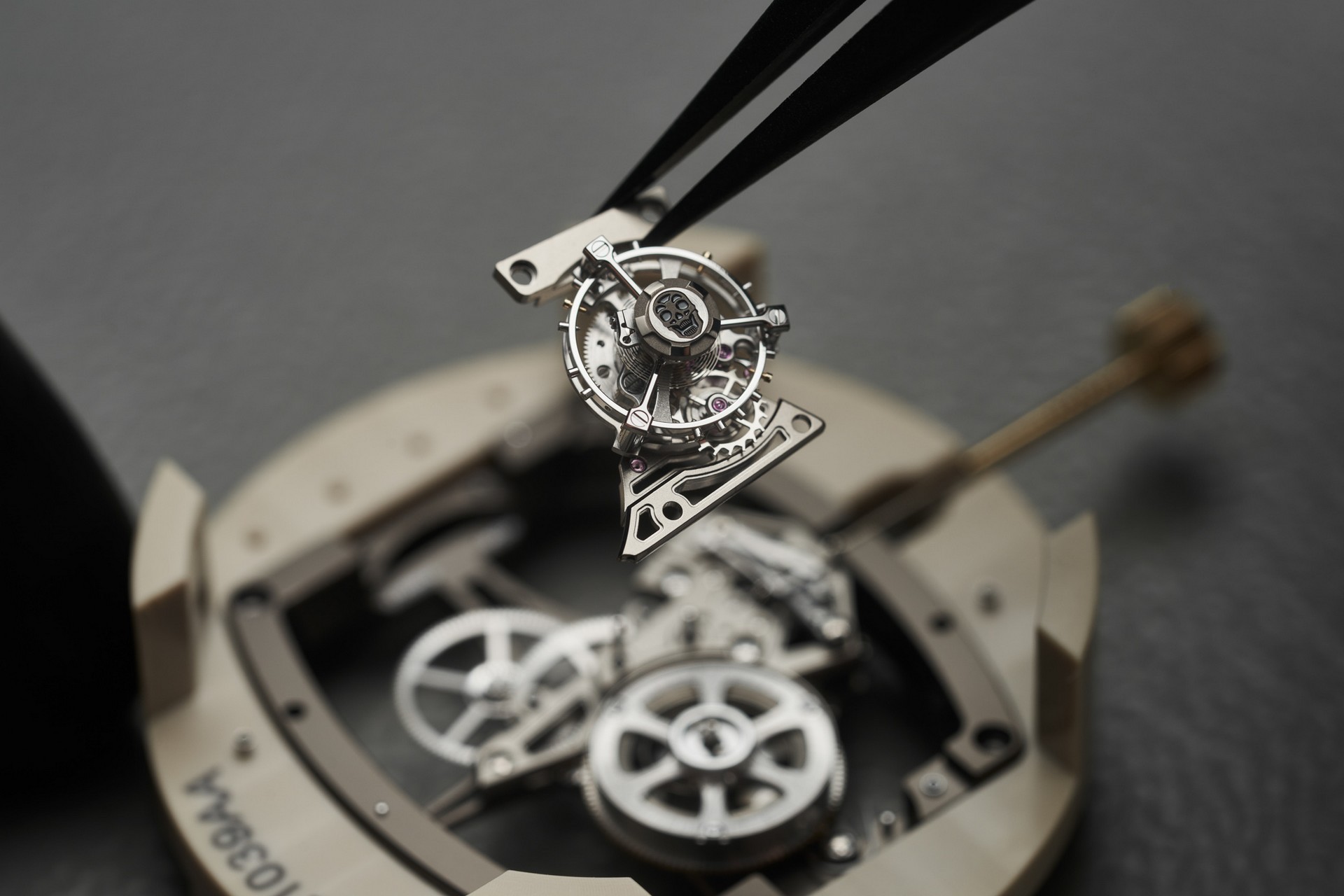Richard Mille RM 66 Flying Tourbillon
Richard Mille asserts its fiercely innovative attitude with the RM 66 Flying Tourbillon. Share
Hand gestures, perhaps the most expressive form of body language, are used for sign language, certainly, but also to convey meaning beyond words, from the social conventions of greeting—the most common of which is the handshake—to more subtle cues. But the so-called devil’s horn, where the index and pinky fingers are raised as the thumb holds down the ring and middle fingers have a particularly colourful identity. Heir to centuries of diverse traditions, beliefs and superstitions, the horn has become a cultural, social and even political phenomenon. Today, it symbolises kinship and inclusion, with a pinch of rebellion and darkness, and a guitar riff screeching in the background. This concept is embodied in RM 66 by showcasing a funereal hand firmly grasping a manual winding tourbillon calibre in grade 5 titanium.

The RM 66 is a symbol against individualism. It is about being part of a clan, an emblem that says, “We belong”. Its flying tourbillon is engraved the seal of the skull, a tribute to the RM 052, first watch to proclaim rebellion and the advent of non-conformity in Haute Horlogerie.
The architecture of the RM66 manual winding calibre showcases a fast-winding barrel providing a 72-hour power reserve positioned at 6 o’clock and a tourbillon at 12 o’clock. To ensure the greatest possible transparency, the grade 5 titanium movement, whose lines follow those of the hand, is highly skeletonised. This is possible thanks to a complex mechanical solution rarely employed by Richard Mille to enhance the skeletonisation, a flying tourbillon with variable inertia. The absence of an upper bridge creates the illusion that it is weightless.

The distinctive feature of the so-called ‘flying’ tourbillon is that its cage is assembled without an upper bridge, creating the impression of weightlessness, and offering perfect visibility. The free-sprung balance offers better reliability in the event of shocks or movement assembly and disassembly, and also guarantees better chronometric results over an extended period of time. The regulator index is eliminated, and a more accurate and repeatable calibration is possible thanks to 4 small, adjustable screws located directly on the balance.
The horns gesture of the RM 66 is represented by outstretched index and little fingers, whilst the last phalange of the thumb holding the middle and ring fingers are visible from the back of the watch. Created by teams overseen by Olivier Vaucher, a renowned Genevan engraver, the openwork hand in 5N red gold is attached to the barrel bridge. Microblasted, polished and finished entirely by hand, each component is the result of extremely careful craftsmanship.

Bringing the world of rock to life within the RM 66 called for quite a bit of technical ingenuity—1,500 hours of Research & Development and 9 months of work for the casing team. The extreme attention to detail is further revealed in the index points shaped like a guitar plectrum, extended by a lancet arch in titanium and the torque-limiting crown in the shape of a spider whose gothic-inspired segments embrace a synthetic ruby and its circular black rubber gasket.
This tripartite tonneau-shaped case is fully curved, which enables the watch to be ergonomic and comfortable, it is very complex to produce and requires a high level of quality control. The bezel and caseback are machined from Carbon TPT, an exclusive material with a unique damascene appearance. Carbon TPT is composed of multiple layers of parallel filaments obtained by dividing carbon fibres. These layers, with a maximum thickness of 30 microns, are impregnated with matrix then woven on a special machine that modifies the direction of the weft by 45° between layers. Heated to 120°C at a pressure of 6 bars, the Carbon TPT is then ready to be processed on a CNC machine at Richard Mille’s factory.

Made of 5N red gold PVD-coated titanium, the hour markers, screwed onto the upper flange, adopt the arched form of a guitar plectrum. The golden colour and inversed-pyramid shape of these markers recall the fingertips of the skeletal hand set into the movement, offering a truly impressive sight. The markers, hollowed at their tips, just like the points of the openwork hands, are covered with Super-LumiNova, for perfect visibility at night.



